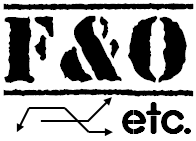|
|
This series of article will be focusing on the Put Ratio BackSpread Options Trading. This strategy is similar to Ratio Call BackSpread Options strategy, but as the name suggests, put is having a payoff function on the other side (lower side) while Call Ratio BackSpread will have the payoff function in the opposite direction.
It is a very interesting options strategy to trade on, because it comes with a low risk profile and potential of high returns. The profit potential is on the lower side of the underlying stock price i.e. when the underlying stock price goes down in big volume, but even if it moves higher, there is some profit or very limited loss (as we will see shortly). Hence, options traders can easily trade on this Put Ratio BackSpread Options as a low risk option strategy. Do note that this also involves shorting of options which might require margin money.
Ratio Put BackSpread Options Strategy Explained with Example
What is Put Ratio BackSpread Options Trading Strategy?
The Put Ratio BackSpread position comprises of 2 long puts (buy) and 1 short put (sell) options on the same underlying with the same expiry date.
Depending upon the costs, the option trader might be in net credit or net debit.
The risk is limited and confined to a region somewhere between the strike prices of the long and short put options, and the profit potential is huge on the downward price movement.
Which scenarios are ideal to trade Put Ratio BackSpread Options
An option trader should take the Put Ratio BackSpread Option position when he expects the underlying stock price to go down with value. Now the question is that same can be achieved by buying a simple Put option (see Long Put Option: How to Trade Long Put? Payoff Charts Explained), or by Shorting a plain vanilla call option (see How to Trade a Short Call? Payoff Charts Explained), or other options trading strategies - then how is this Put Ratio BackSpread different?
The answer is that Put Ratio BackSpread is different because it requires low capital upfront. Since it also involves shorting of puts (along with buying puts), the option trader gets some money from sale of puts in Put Ratio BackSpread. Hence his overall money requirement reduces. But do note that shorting might need margin money as demanded by your broker.
Also, this Put Ratio BackSpread structure (see payoff functions of Put Ratio BackSpread), ensure that the loss is limited even in case of big price moves in upward direction. In case of a long put, an option trader would loose all his money if there is a big upward price movement. In case of a short call, situation is more dangerous as loss potential is unlimited. But in case of Put Ratio BackSpread, the loss is capped.
One can also go for Butterfly trading (See Short Put Butterfly Option Trading and Short Call Butterfly Options Explained), but in both these cases the profits are limited, while Put Ratio BackSpread offers larger profit potential on the downward movement of underlying stock price.
But do remember that each has its own set of profit and loss positions and each come with its own level of complexity in terms of practical trading. Traders are advised to go through each of the above links above to understand the merits and drawbacks of each and then take a call accordingly.
Here is how the construction of Ratio Call BackSpread is done:

To understand it further, lets move on to Example & Payoff Charts of Ratio Put BackSpread Options

0 Comments: Post your Comments
Wish you all profitable derivatives trading and investing activities with safety! = = Post a Comment